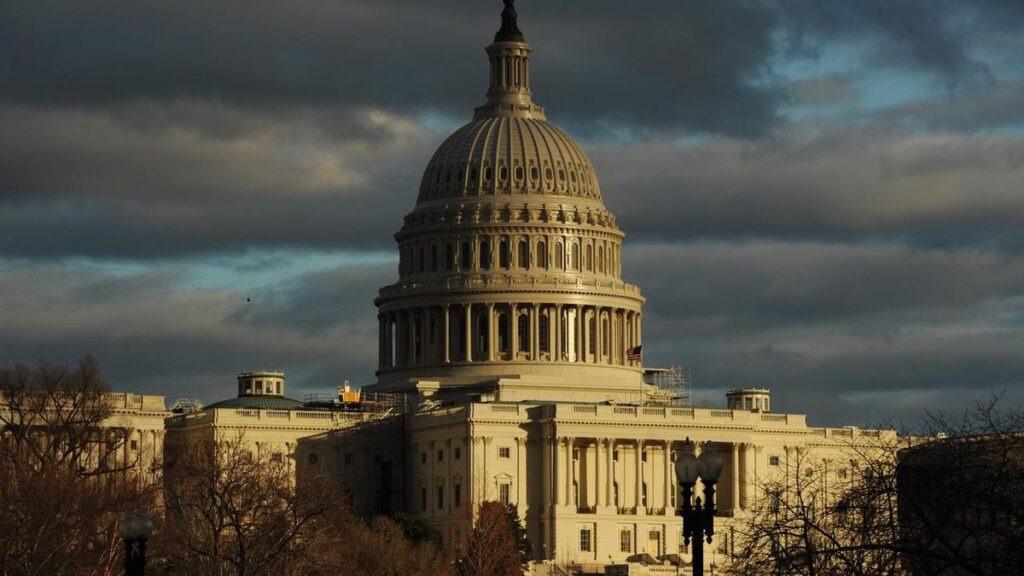US President Donald Trump and his Democratic opponents appear to have made little progress at a White House meeting aimed at heading off a government shutdown that could disrupt a wide range of services as soon as tis week.
Both sides emerged from the meeting saying the other would be at fault if Congress fails to extend government funding beyond a Tuesday midnight deadline.
“I think we’re headed to a shutdown,” Vice President JD Vance said.
Democrats say any agreement to extend that deadline must also preserve expiring health benefits, while Trump’s Republicans insist health and government funding must be dealt with as separate issues.
Senate Democratic Leader Chuck Schumer said the two sides “have very large differences”.
If Congress does not act, thousands of federal government workers could be furloughed, from NASA to the national parks, and a wide range of services would be disrupted. Federal courts might have to close and grants for small businesses could be delayed.
Budget stand-offs have become relatively routine in Washington over the past 15 years and are often resolved at the last minute. But Trump’s willingness to override or ignore spending laws passed by Congress has injected a new dimension of uncertainty.
Trump has refused to spend billions of dollars approved by Congress and is threatening to extend his purge of the federal workforce if Congress allows the government to shut down. Only a handful of agencies have so far published plans detailing how they would proceed in the event of a shutdown.
At issue is $US1.7 trillion ($A2.6 trillion) in “discretionary” spending that funds agency operations, which amounts to roughly one-quarter of the government’s total $US7 trillion ($A11 trillion) budget. Much of the remainder goes to health and retirement programs and interest payments on the growing $US37.5 trillion ($A57.1 trillion) debt.
Democrats have floated a plan that would extend current funding for seven to 10 days, according to Democratic sources, which could buy time to hammer out a more permanent agreement. That is shorter than the timeline backed by Republicans, which would extend funding to November 21.
There have been 14 partial government shutdowns since 1981, most lasting just a few days. The most recent was also the longest, lasting 35 days in 2018 and 2019 due to a dispute over immigration during Trump’s first term.
This time healthcare is at issue. About 24 million Americans who get coverage through the Affordable Care Act will see their costs rise if Congress does not extend temporary tax breaks due to expire at the end of 2025.
House Democratic Leader Hakeem Jeffries said Congress needs to make those tax breaks permanent now because higher health insurance premiums are being finalised and the new sign-up period starts November 1.
“We believe that simply accepting the Republican plan to continue to assault and gut healthcare is unacceptable,” Jeffries said at a Monday press conference.
Republicans say they are willing to consider the issue, but not as part of a temporary spending patch.
“They had some ideas that I actually thought were reasonable, and they had some ideas that the president thought was reasonable. What’s not reasonable is to hold those ideas as leverage and to shut down the government,” Vance said.
Democrats want to energise their voting base ahead of the 2026 midterm elections, when control of Congress will be at stake, and have broadly lined up behind the healthcare push.
But Democratic aides have privately expressed concerns that a shutdown could create a public backlash if Democrats do not effectively argue their case and instead come off sounding as just being opposed to whatever Trump wants – a stance Republicans like Thune have derided as “Trump Derangement Syndrome.”
https://thewest.com.au/politics/little-progress-as-us-government-shutdown-looms-c-20184823


